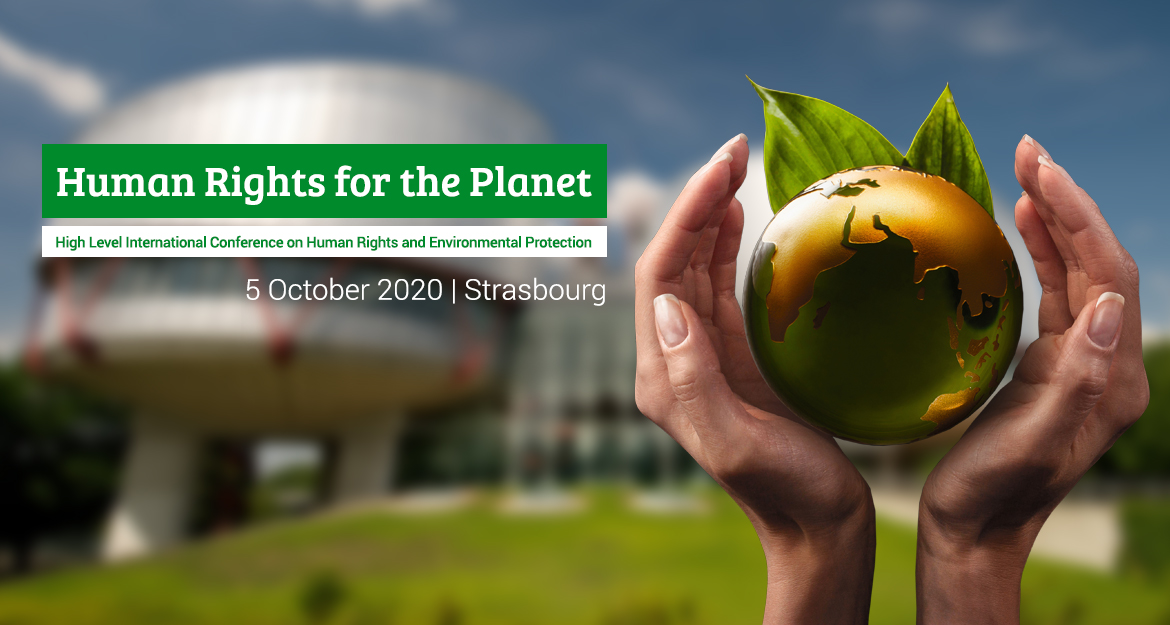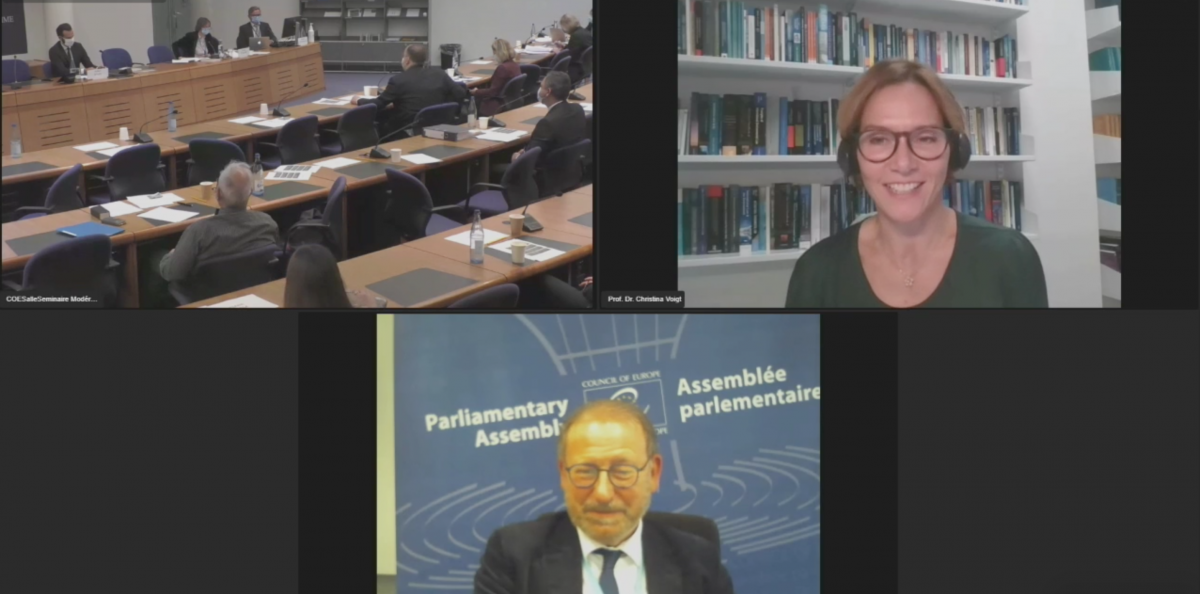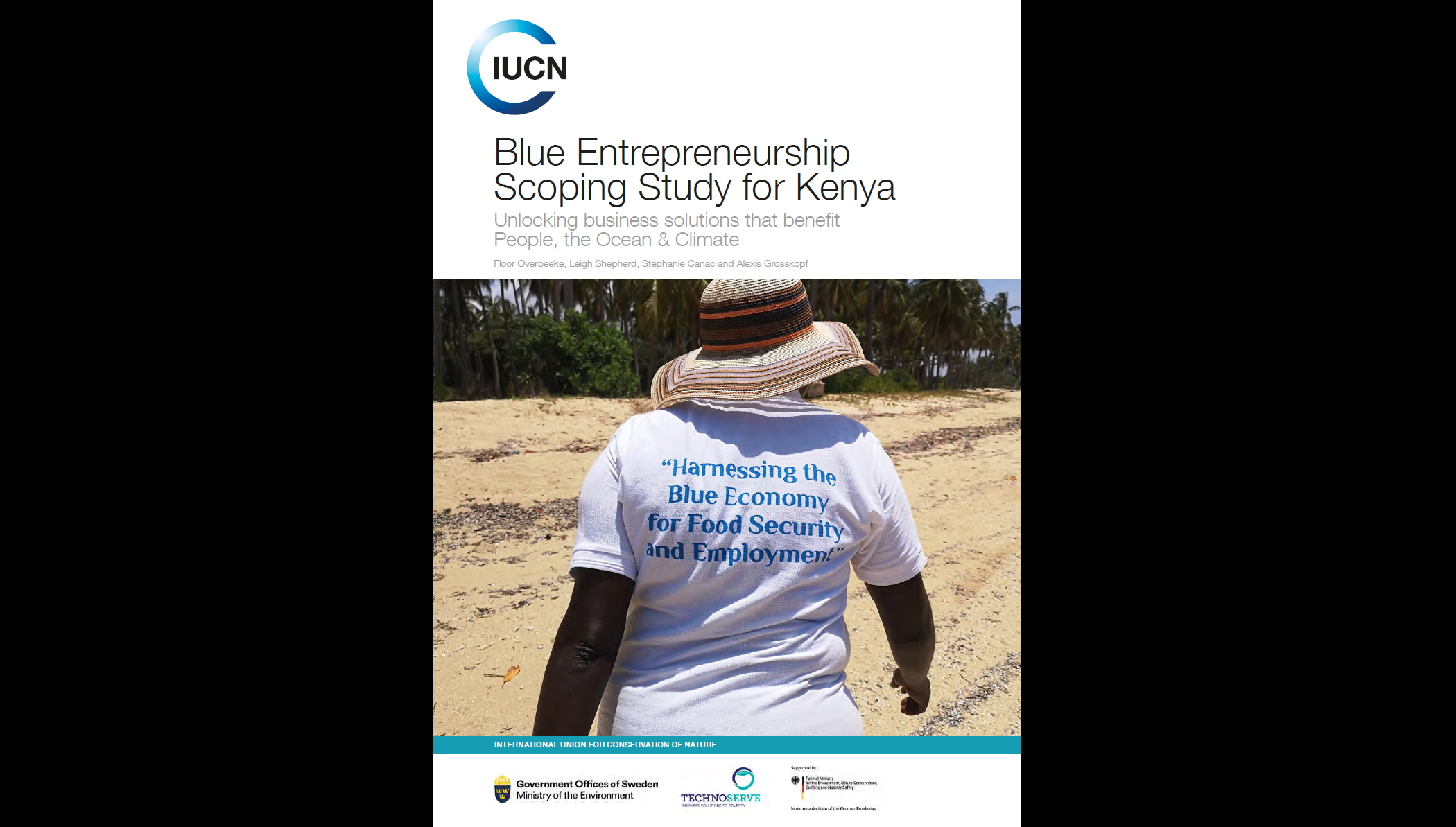The Human Rights for the Planet Conference discusses environmental protection and climate change
By Marina Venâncio - In the context of alarming biodiversity loss rates, transboundary pollution, and aggravating climate change consequences, Environmental and Human Rights Law have been facing unprecedented challenges in human history. The recently published UN Environment’s sixth edition of the Global Environment Outlook called attention to the deeply interwoven biodiversity, environmental, and climate crises, and the need to urgently advance the ecological agenda post-COVID-19.
Within this scenario, the “Human rights for the planet: High level international conference on human rights and environmental protection,” held on 5 October 2020 in Strasburg, Germany provided a timely opportunity to discuss and reflect on the role of international human rights tribunals in safeguarding obligations deriving from environmental and climate change law. The conference was hosted by the Government of Georgia, Council of Europe, and the European Court of Human Rights.
Conference panelists, including judges from the European Court of Human Rights (ECtHR) and legal academics, considered theoretical principles including ecocentric human rights and participatory rights, as well as threats to the environment from air pollution and climate change.
 Photo: Christina Voigt
Photo: Christina Voigt
Prof. Christina Voigt, in her exposition, focused on the climate dimension of human rights obligations, highlighting that the climate crisis could be a barrier to their full enjoyment. Pointing out the scientifically proven links between climate change impacts and human systems, she stressed that “the higher the temperature, the higher the risk.” In other words, the consequences of anthropogenic climate change are unparalleled in scale and urgency and affect several human rights, such as the rights to life, health, food, and sanitation.
As noted by Professor Voigt, climate change is addressed by a wide range of treaties and legal instruments at national and international levels, such as the Paris Agreement and national climate policies. However, human rights are often outside of their scope. Nonetheless, States have obligations to ensure human rights to everyone within their jurisdiction. The foreseeable climate change impacts – that directly affect human rights – give rise to extended States’ duties to take proper action against these effects.
Therefore, it should be possible for human rights courts to ask whether the measures adopted by States under the climate change regime are effectively aimed at achieving rapid decarbonization and carbon neutrality, according to their respective capacities and the highest possible ambition. Consequently, if States fail to fulfill their climate obligations, it should also be possible to ask States to revisit any measures in place. Not only States have to do better, but the best they can, stressed Professor Voigt.
Mr. Spano discussed and assessed entry points for environmental and climate changes issues in the European Court of Human Rights. He stressed that humanity is facing a dire emergency that requires immediate action, reinforcing that the Court would play its role, within its purview, towards effective protection of human rights. Similarly, from a policymaking perspective, Mr. Daems highlighted the importance of standard-setting and soft law instruments to bridge the gap between human rights and the environment.
Lastly, the audience, who attended the conference in person or via broadcast, engaged with the speakers in a lively question and answers session.
Additional information and the conference’s supporting documents are available here. A video of the afternoon session is available here.





